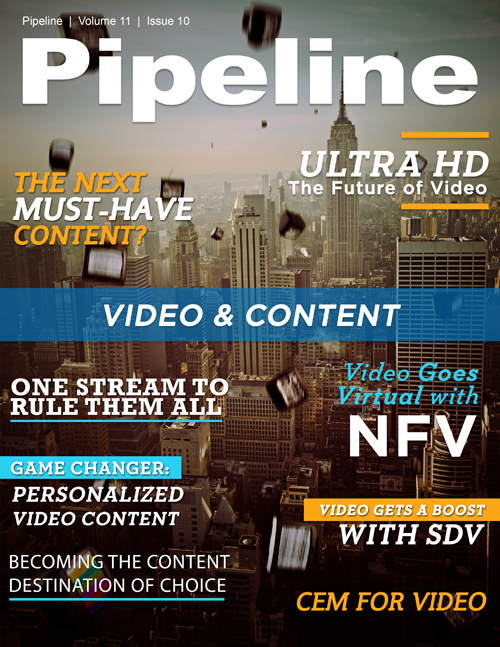Gamechanger: Personalized Video Content
"There is no bad content, only content that is not relevant to the audience."
Pipeline: That model can only go so far towards personalization, making the assumption that people who have similar behaviors will like the same content.
How did the product evolve as more digital content offerings provided richer data?Auteri: We realized to improve discovery we had to look at the content. We had to teach a machine how to understand a movie - what the movie is to the customer. We started to look at metadata, especially where we could extract meanings, such as from editorial descriptions, genre tags, and other relevant things such as the director who adds a particular style to a movie. From that we created and began experimenting with second family of content algorithms that analyzed this data. What we saw was that both algorithms have strengths and weaknesses. For example, results based on historical data don't work for new content because there is no historical data to bring new content into recommendations. Similarly, a new user - or "cold start" will get no recommendation because they have no profile created. So we created a hybrid algorithm that blends both the collaborative filtering and content based approaches so that we have an automatic balance of new content and new users getting the appropriate recommendations. In 2014, we introduced a new innovation called Prediction to incorporate context into the personalization analysis to detect patterns of behavior across time, device type, and location.
Pipeline: There is some obvious value in understanding when a customer is viewing content, but what other the other benefits can be derived by analyzing this data?
Auteri: We can first understand when a viewer is likely to consume particular types of content. For example, we can discover if the viewer typically likes to watch the news in the morning on mobile device. But, we can also use this information to measure the level of engagement with particular programing by looking at which content a viewing is watching across all platforms. From the data we proved mathematically the formation of habits so the user is more willing and happier to engage with the operator's services that are more relevant to them.
Pipeline: Is there an application of this technology outside of personalized content, such as advertising?
Auteri: Yes, our technology is being applied to advertising in three ways. The first way is to provide the ability to describe the user profile in terms of emotional traits from the content. For example we can enrich the user profile with keywords like this user likes uplifting movies or those based on family relationships. The second group of traits we can detect are cultural; so we can detect if the user belongs to one or more cultural groups such as Latino or African American or even if they are conservative or more liberal. The third group relates to lifestyle. We can detect if there are children in the home, late night viewing habits, or if there is no viewing activity on weekends. These three elements - emotional, cultural, and lifestyle traits - can be presented to an external advertising system which enables a rich personalized advertising experience and puts the advertising in context based on the relevancy of advertising content to the viewer and related to their tolerance for the type of advertising. Emotional and lifestyle traits are very useful for campaigns when it comes to lifestyle brands - such as Nike and Red Bull - which tie the emotions of a person to the values of the brand. Instead of using demographics such as age and gender to identify an addressable market, these emotional and lifestyle traits help advertisers and agencies better design campaigns around these traits to define the audience they really want to reach.
Pipeline: What impact does personalized video and advertising have on today's customer experience?
Auteri: I always say: there is no bad content, only content that is not relevant to the audience. If you are conducting a great campaign to the wrong market, then you are not delivering a good experience. We help our customers segment their audience in a way that is far more advanced than the traditional method to make sure the user gets exposure to the right content and campaigns based on a higher degree of understanding of the user's preferences and a more robust user profile.



















